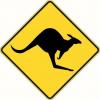Hi all,
I feel like this is a dumb question, but I’m stumped. I’m building new cabinets for my kitchen, stained. They are faceframe style. Maple (for now).
I have a lumber company in the Atlanta area and they sell 2” precut faceframe material. My problem is that almost all lumber is, at least, a little bowed. Even the dimensional maple is bowed, at least a bit. I can correct most of the bowing on the faceframes. But, I need the cabinet doors’ rails and stiles to be straight and unbowed to close correctly.
If I plane it, then the tongue and groove doesn’t really line up. Since it is exactly 3/4” thick, I like the uniformity.
So, what do most of ya’ll do to get the stiles/rails straight? Can you find un-bowed lumber (besides oak)?
Please help. ALL suggestions/ideas are appreciated.
bob
P.S. I’m also looking at a Jessum router table or a shaper for tongue/groove. Ideas?




 Reply With Quote
Reply With Quote






